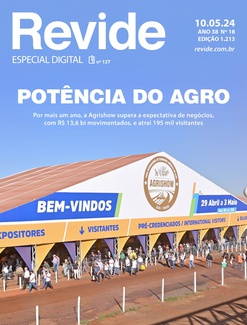
Environmental Changes Affecting Food and Agribusiness
Special for China Daily, March 31st, by Marcos Fava Neves
The objective of this article is to share with China Daily readers some important changes in the macro-environmental variables that are affecting and may affect companies operating in food and agribusiness.
I will use the traditional PEST analysis to summarize the major thoughts. Just remembering, the PEST (or STEP) analysis is a traditional tool to understand macro-environmental changes. The “P” represents the political-legal environment (institutional environment). “E” is the economic and natural environments. “S” is for the sociocultural environment and finally, “T” is for the technological environment. These four environments help to organize the variables and are a first and very important “step” in strategic planning processes.
Starting with the political-legal environment, we may point that instability in Iran, North Korea and other middle-east and northern African countries are affecting oil prices, together with the growth in oil consumption coming from emerging economies. This will help to leverage even more the biofuel industry, since high oil prices make the economic benefits, and not only environmental benefits, to boost investments and also stimulate Governmental´s blending biofuels into gasoline mandates.
Lower interest rates in Europe driving are driving enormous flow of resources to emerging economies, and these are suffering with the valuation of their currencies, eroding their competitiveness. Also some expected reforms are not progressing in important food/agribusiness producing countries bringing cost increase in several commodities.
Confusing tax management policies in developing countries are also happening, with new protections and market access limitations. We face increasing risks of interference (regulation), being examples the limitation in food advertisement to kids and regulation towards international investments in land. In developed economies, we see shorter federal budgets as an argument to remove support for some less efficient agribusiness industries and even farmers support programs.
The economic and natural environment shows that this year and probably in this decade, economic growth will be coming mostly from emerging countries (5,5% average of GDP growth in 2012, and 1,5% growth in developed economies) due to a larger pace of income distribution in populated emerging economies, the faster than expected recovery of the USA and Europe still not growing.
Exchange rate policies are being more used to affect competitiveness of regions and financial flows of capital and investment funds with attractiveness to invest in food and agriculture brings a new environment of capital availability and increasing risks.
Since there is an increasing influence of weather impacts in some regions, we see production regions switching, also caused by land prices and labor. New agricultural frontiers are being developed by local or international companies, following the Governmental incentives for value capturing in producing regions (more processing and other). Also in the economic environment, bigger environmental pressure will increase production costs and we see more initiatives of buyers increasing coordination over suppliers (farmers).
The sociocultural environment shows some interesting changes. Migration and urbanization leveraging the growth of processed food, the protest and mobilization movements are increasing pressure over inclusion, thus signalizing companies that this can be an opportunity within the supply chain. Risks of consumer movements are getting bigger for companies. The demographic trends of reduction on family size and people living alone continue to boost foodservice and ready to eat markets. There is also an increasing concern about food waste, and we see growing debate in this field.
Consumers are also demanding more information about the story behind production (link to farmers), more direct trade and to value what is “local”. Natural and healthy movements continue strong, increasing demand for certifications of products, companies and food chains and there is a larger acceptance of biotechnology, with focus over genetically modified products.
Another important point is an increasing pressure done by society and buyers towards protection of some industries. As an example, several sugar buyers in the USA are protesting against high import taxes and other support programs for local sugar industry, with higher costs than international markets.
Finally, within the technological environment there is an increasing pressure over natural resources and we are entering the era of commodities. A lot of investments and the development of biotech and nanotechnologies are happening, and in the communication side, we feel the rapid transformation of society with the digital world and new media improving the speed of communication. The development of systems speeding up information availability is facilitating the tracing process, helping to identify products sources and other relevant information. Technologies that allow to recycle and re-use have higher value than before.
These were some of the changes coming from recent discussions with business managers and executives. These are facts that will bring specific impacts to the industries and desiring strategies, or acts of food chain participants in their planning processes.
The author is professor of strategic planning and food chains at the School of Economics and Business, University of Sao Paulo, Brazil (www.favaneves.org) and international speaker. Author of 25 books published in 8 countries.

